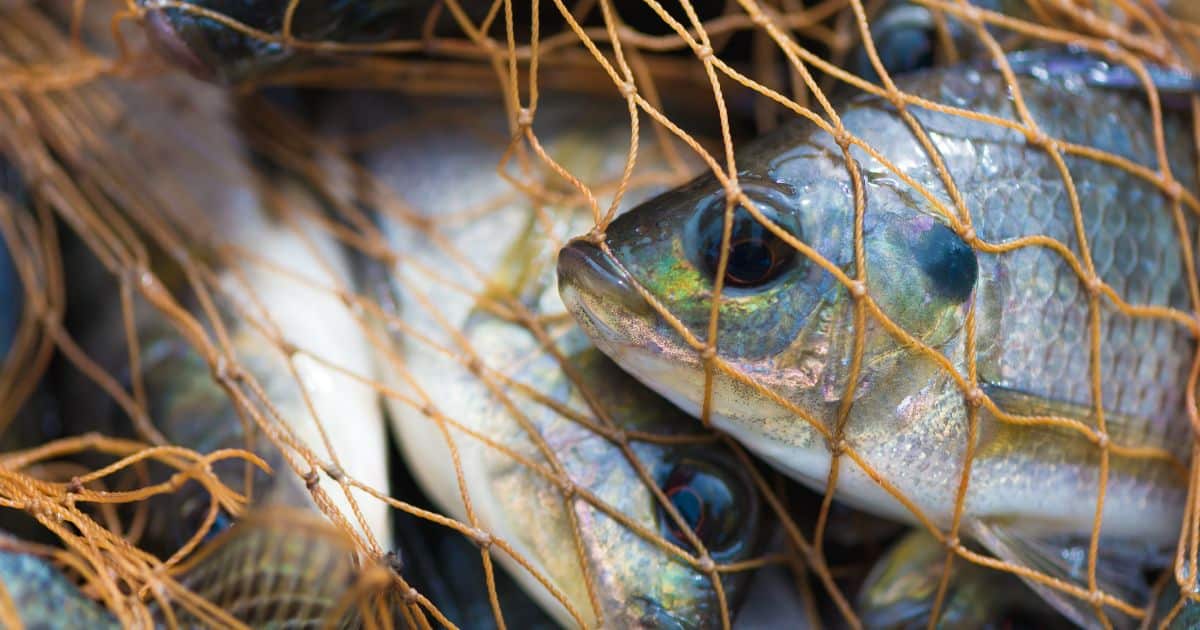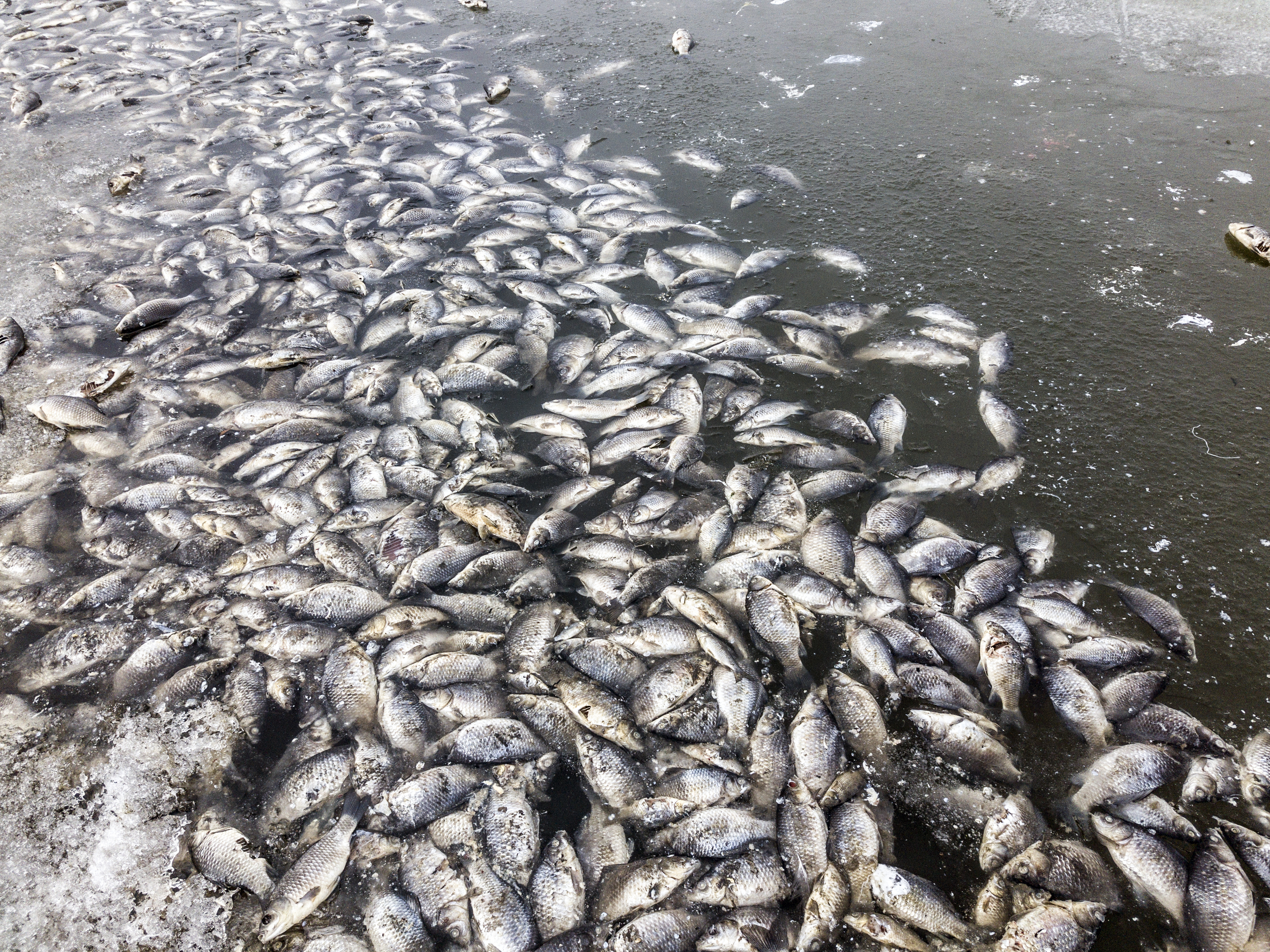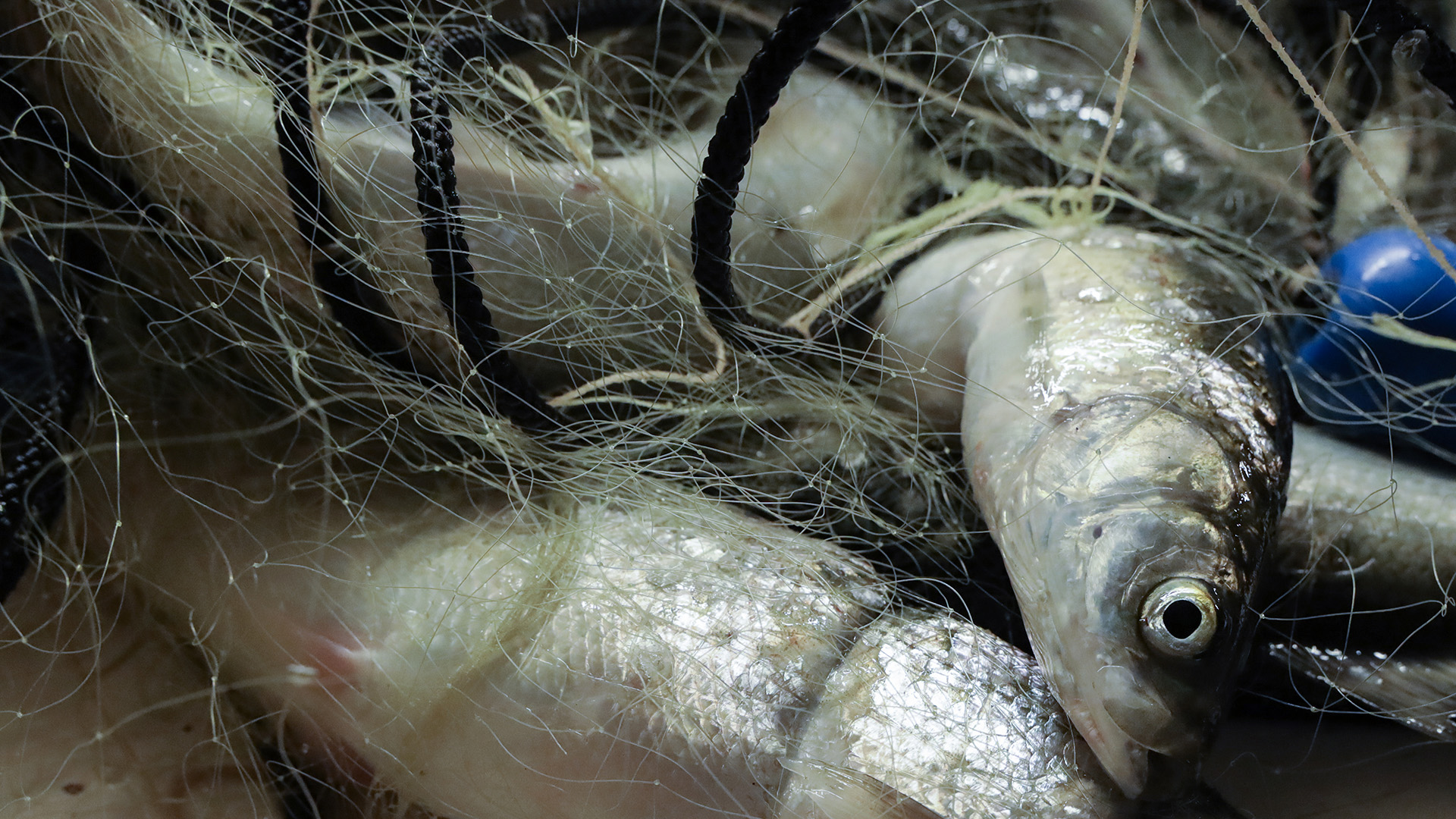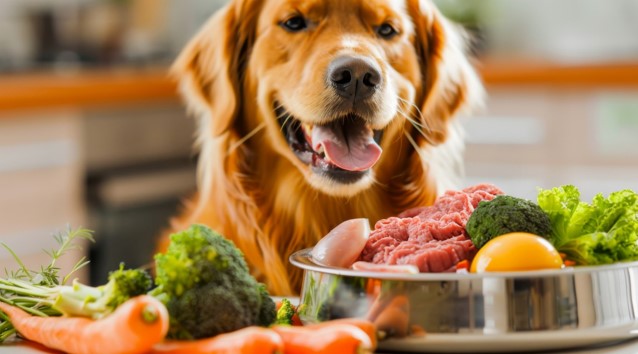Kenyan science interns turn Lake Victoria’s fish waste into oil and flowers
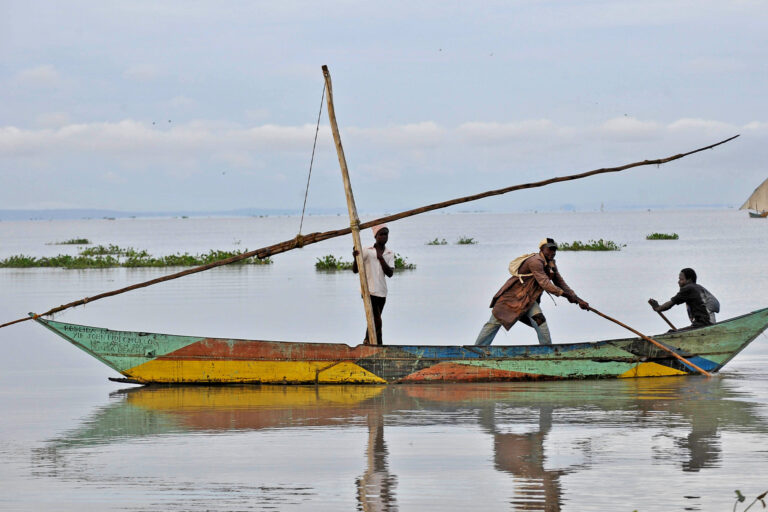
- Fish processing on Lake Victoria in Kenya generates tons of waste that harms the environment and leads to oxygen depletion and algal blooms that threaten native aquatic species.
- Science interns at the Kenya Marine and Fisheries Research Institute have developed a way to extract valuable fish oil from the waste, and they are also making decorative flowers from fish scales.
- These innovations are part of a growing trend of recycling Lake Victoria’s fish waste, turning it into goods that can be sold in local communities.
- Scientists aim to reduce the environmental harms of fish waste through innovations that could eventually be scaled up to meet growing national and international demands for fish oil and other products.
KISUMU, Kenya — At Dunga Beach on the shores of Lake Victoria, numerous varieties of fish, such as tilapia, Nile perch and mudfish, are processed for consumption and distribution. Every day after processing, the fish remains create tons of waste that threatens the environment.
The process of converting Nile perch into chilled fish fillets for export generates substantial amounts of solid and liquid waste, estimated to be as high as 50-80{95221ed7c1b18b55d17ae0bef2e0eaa704ccc2431c5b12f9d786c88d1acb538d} of the original raw material, thereby posing significant environmental concerns.
In addition, the proliferation of medium-sized fish processing facilities along the lakeshores leads to a significant amount of waste. The Kenya Marine and Fisheries Research Institute (KMFRI) reports that 150,000 tons of fish waste are generated each year, of which 80{95221ed7c1b18b55d17ae0bef2e0eaa704ccc2431c5b12f9d786c88d1acb538d} is dumped.
A substantial portion of the fish waste is swept into the lake, while some of it ends up in open landfills. But now, a group of young scientists is trying to solve the problem, turning fish waste into valuable fish oil. Their efforts are part of a growing trend in recycling Lake Victoria’s waste and turning it into usable goods.
Environmentalists have warned of the dangers in fish waste: When it decomposes, it consumes oxygen from the water. This can lead to oxygen depletion, which can harm fish and other aquatic organisms that require oxygen to survive.
In addition, excess amounts of fish waste and other nutrient sources can cause eutrophication, which is when an excess of nutrients in the water leads to algal blooms and reduced water clarity. Fish waste can also contain bacteria and viruses that can harm human health if the water is used for swimming, fishing or other recreational activities.

Income potential in fish waste
Many fishmongers are unaware that they are discarding potential sources of income by tossing out fish scales, bones, skins and bladders, which could be worth millions of shillings on local and international markets, according to officials at the Kenya Fisheries Department.
According to research published in the International Journal of Environmental Research and Public Health and other journals, there are many ways to use fish waste to generate income depending on local market demand, availability of resources and the technical know-how of the individual or community involved.
For example, fish waste can be used to produce high-quality organic fertilizer. During the composting process, the organic matter in the fish waste breaks down, releasing nutrients that are essential to plant growth. This organic fertilizer can be sold to farmers, landscapers and gardeners.
In addition, fish waste can also be processed into fish meal, which is a high-protein feed ingredient used in aquaculture and livestock feed. It can also be used in aquaponics as a fertilizer for plants that purify the water; it can be made into biogas, a renewable energy source that generates electricity or heat through anaerobic digestion; and the collagen found in fish waste can be used in the production of cosmetics and medical products.
On Lake Victoria, local communities are also finding that fish waste can be converted into oil through a process called rendering, which involves heating the waste to break down fats and oils. Afterward, the oil can be used to make biodiesel, omega-3 supplements and cosmetics. This production method has lower costs and a reduced environmental impact compared with traditional fish oil production.
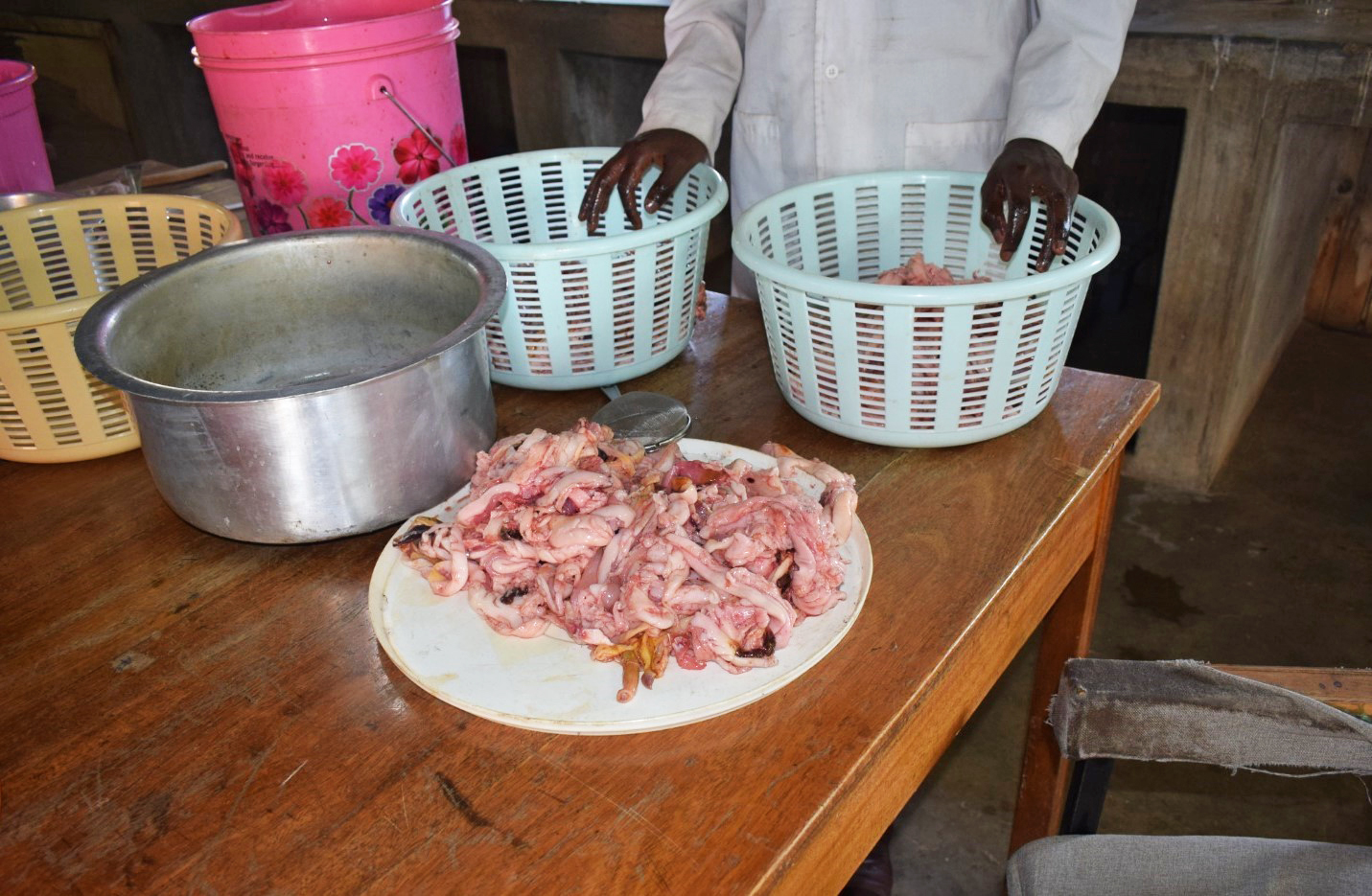
Despite having a decade of experience in the fishing industry, Lucy Akinyi a Lake Victoria fishmonger, said she is ignorant of the concept of omega-3 fatty acids, commonly known as fish oil, being produced from the wastes she discards.
Alice Aluoch, another fishmonger, revealed that she sells only the fish meat and removes the scales with a knife, resulting in up to a 20-liter bucket of waste she discards each day.
At a fish market with hundreds of fishmongers, this results in tons of waste being discarded each day.
Over the years, experts have grappled with how to dispose of the matter. This is in order to save the lake, which is already choked with pollution posing a threat to humans and aquatic life. According to the United Nations Environment Program, Lake Victoria faces various forms of pollution, including agricultural, which results in harmful algal blooms through eutrophication.
The lake also suffers from industrial pollution such as heavy metals, chemicals and other toxic substances. High levels of waste from human settlements, including sewage and solid waste, lead to the spread of waterborne diseases and invasive species such as water hyacinth. Along with invasive Nile perch, these species have left significant ecological impacts on the lake, including the displacement of native species and changes to the lake’s food web.

Science interns learn to extract oil from waste
In a surprising turn of events, Lake Victoria’s fish leftovers have proved to be a fortunate find for a group of interns at KMFRI.
Dennis Otieno, an aquatic science graduate from Kenya’s Egerton University, has led a team of five interns who have created innovative technologies capable of transforming fish waste into fish oil.
Fish oil, a rich source of omega-3 fatty acids, is finding its way into a range of products across various industries. It is a popular dietary supplement for its benefits in promoting heart health, brain function and reducing inflammation.
In addition, fish oil is used as a supplement in animal feed to improve livestock health and the nutritional quality of animal products. Industries such as paint, varnish and lubricant production use fish oil for its chemical properties.
Fish oil is also used in the production of cosmetics, such as skin creams and lotions, due to its moisturizing and anti-inflammatory properties. And it’s used in pharmaceutical products to treat high cholesterol levels.
Beyond fish oil, the interns have also developed a method of repurposing fish scales into beautiful flowers for decorations in events and universities locally. While this solution is currently being implemented on a small scale, it has the potential to be scaled up using advanced technologies to address the environmental challenge posed by fish waste.
The program was inspired by Otieno’s undergraduate project in 2017. Under the guidance of his supervisors, he extracted oil from the common carp (Cyprinus carpio) found in Lake Naivasha, northwest of Nairobi. Upon successfully completing the project, he graduated and joined the Kenya Fisheries Department in Kisumu as an intern. While working there, Otieno decided to collaborate with his colleagues to implement the project on the shores of Lake Victoria. And now, the group uses Nile perch waste to extract fish oils.
“If the project is upscaled, it can contribute to the improvement of environment, boost health of the people, increase income and improve livelihoods,” he said.
Otieno said he sees this as a solution that could bridge the gap in the fishery value chain and promote environmental conservation.

With a locally made oil extractor machine that costs $556, Otieno and his colleagues extract omega-3 fish oils from Nile perch offal. This machine contains three main components that can also assess the quality of a product.
“The offal is fed into the machine, where it is mixed with water and stirred at a very high speed for a few minutes before the final product is produced,” Otieno explained.
The remains after the oil extraction process are used as chicken feed, gelatin and collagen used to treat burns.
The extraction technique follows standard procedure as outlined in a 2019 study published in the journal Foods.
The study assessed the impact of a fish oil refining process in four stages: “degumming (to separate phospholipids), neutralizing (to reduce acidity), bleaching (to remove coloured materials) and deodorization (to remove unwanted odour compounds).”
Otieno said that since they initiated the process in 2022, they have observed a rise in the local community’s demand for fish oil. Hence, local buyers purchase the oil directly from the production site.
“The success of the project has provided economic empowerment for us, and our ultimate goal is to become the leading producer of omega-3 fish oil, animal feed, gelatin and fish flowers in the region.”
According to him, if a fish weighing 18kg (40 pounds) is sold for $57, he can extract 11 liters (about 3 gallons) of oil from its waste and sell the oil for $65.
Despite this, Otieno said the team is facing the challenge of inadequate funding, which has impeded their efforts to scale up production.
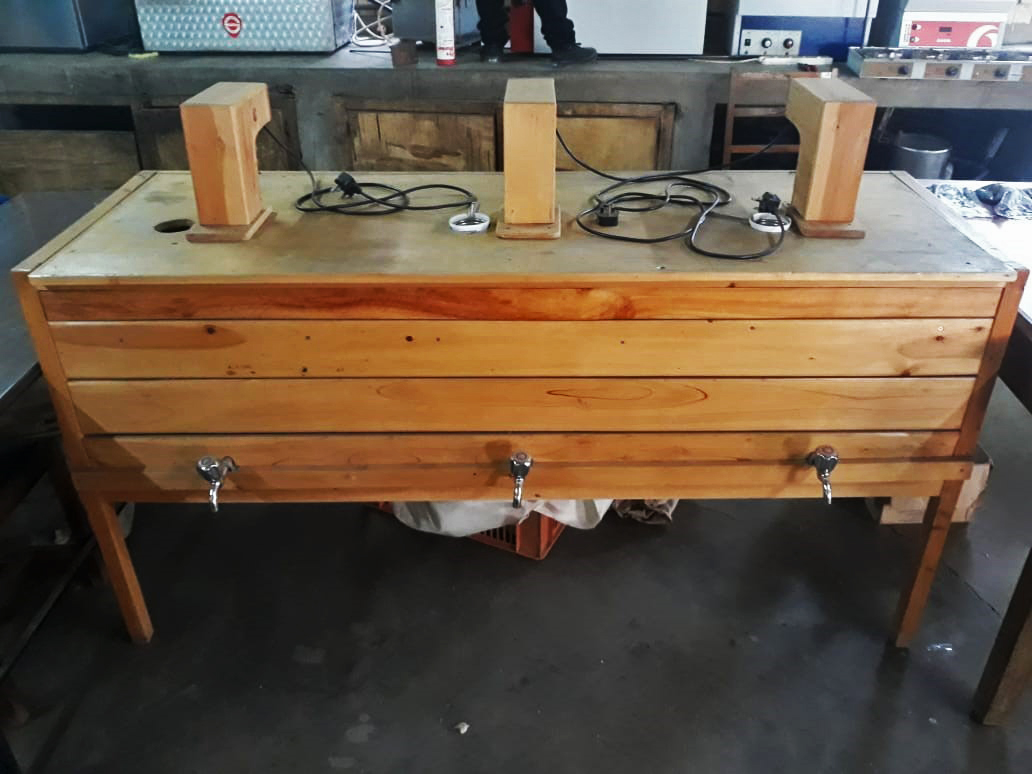
Growing global markets for fish oil
According to a market analysis report by the business consulting firm Grand View Research, the global fish oil market was valued at $2.25 billion in 2014. Newer forecasting by Vantage Market Research showed expected growth to reach $17 billion by 2028.
Economic research has shown that the demand for fish oil would likely surge further due to growing awareness among consumers of the health benefits associated with omega-3 consumption.
Furthermore, the Grand View report predicted the industry would experience an increase in demand due to shifts in dietary habits that result in greater consumption of hydrogenated vegetable oils and margarine. In addition, the use of fish oil in protective coatings and lubricants was expected to be a driving factor in industry growth.
Mongabay spoke to William Okello, one of the customers who purchase oil from Otieno and his team, who said his health improved after consuming a teaspoon of the oil. Another customer, Ann Akinyi, who was six months pregnant, reported that the oil from Otieno prevented her feet from swelling, a common issue among pregnant women.
Research has shown that fish oil can have potential benefits in addressing pregnancy-related issues. According to a study published in the journal Reviews in Obstetrics and Gynecology, taking fish oil supplements during pregnancy may help to reduce the risk of preterm birth, low birth weight, and preeclampsia.
“I take a spoonful of the oil after I cook vegetables and sprinkle the oil over them before eating,” Akinyi said.
In order to gain more health benefits from omega-3 fatty acids found in fish, the World Health Organization (WHO) recommends consuming 1-2 servings of fish per week, as this may offer protection against various diseases.
Additional benefits of fish oil include promoting heart health, aiding in the treatment of some mental health conditions, supporting eye health, reducing inflammation, improving skin health, reducing liver fat and alleviating symptoms of depression.

From fish scales to flowers
Apart from fish oil extraction, Otieno identified the environmental impacts of fish waste and set out to discover other creative solutions to the issue.
“I was inspired by the beautiful arrangement of fish scales and thought that they could be transformed into lovely flowers,” Otieno explained, noting that he could create up to five bouquets in a single day.
The process of fashioning flowers from fish scales involves first washing them and then soaking them in dye derived from plant pigments before air-drying them for a minimum of three hours.
Otieno then joins together the colorful scales using a fish skin-derived adhesive to create a range of designs and patterns.
He sells them to the local community and, at times, for weddings and anniversaries.
Otieno has showcased this innovation in different conferences such as the United Nations Environment Assembly (UNEA-5.2) held in Nairobi in February and March 2022 to promote the flowers’ sale to the public. He said he believed capital investment in aquaculture was necessary.
Chrispin Nyamweya, assistant director and research scientist at KMFRI, praised the innovations by the interns and revealed that there are plans to certify the products for large-scale production.
He mentioned that KMFRI intended to seek the approval of agencies, including the Kenya Bureau of Standards, to ensure food safety for both flowers and fish oil before the technologies would be given to industries to implement.
Nyamweya further stated that KMFRI is taking time with the process to patent the technologies and secure copyright for the young innovators.
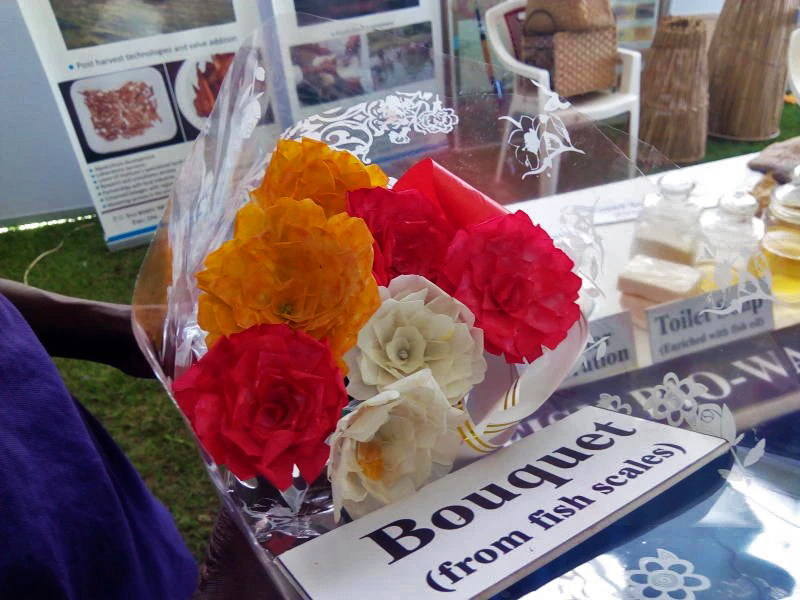
Fish waste recycling expanding on Lake Victoria
Fish waste recycling has gained traction in the recent past among different groups in Kenya. For instance, women on the shores of Lake Victoria gather freshly discarded fish waste, which includes skin and bones left after filleting. After smoking and drying the waste, they grind it with a milling machine.
Isabella Asamba, an environmentalist at Maseno University, explained that the animal feed produced from fish waste is nutritious and can enhance the productivity and health of piglets, calves and chicks.
The skin from larger Nile perch is delivered to the Kenya Industrial Research and Development Institute to be treated and tanned into sturdy leather that is less prone to decomposition. Before sun-drying, chemicals are used to eliminate the fish oil from the skin, and table salt is added.
According to Asamba, the leather is then used to create footwear and handbags. This implies that “we have discovered a more suitable and profitable approach to utilizing fish waste rather than discarding it,” Asamba said. Raw materials are readily available, as Nile perch accounts for 70{95221ed7c1b18b55d17ae0bef2e0eaa704ccc2431c5b12f9d786c88d1acb538d} of Lake Victoria’s total fish catch.
Nyamweya observed that fish waste recycling has had a positive impact on the environment on the shores of Lake Victoria. “Previously, the fish waste would be left to rot on the shorelines, causing pollution and creating a foul smell. However, with the introduction of fish waste recycling, the waste is now being utilized to create valuable products such as fish oil and animal feed,” he said.
He explained that this has not only reduced pollution but also provided a source of income for local communities. Additionally, the recycling process has helped to improve the hygiene and sanitation of the local area. Overall, he said, the recycling of fish waste has had a significant positive impact on the environment, economy and community health on the shores of Lake Victoria.
Banner image: Fishers going fishing at Dunga Beach, Kisumu. Image by Marcel Crozet / ILO via Flickr (CC BY-NC-ND 2.0).
Boom and bust on Lake Victoria: Q&A with author Mark Weston
Citations:
Venslauskas, K., Navickas, K., Nappa, M., Kangas, P., Mozūraitytė, R., Šližytė, R., & Župerka, V. (2021). Energetic and economic evaluation of zero-waste fish Co-stream processing. International Journal of Environmental Research and Public Health, 18(5), 2358. doi:10.3390/ijerph18052358
Ferronato, N., & Torretta, V. (2019). Waste mismanagement in developing countries: A review of global issues. International Journal of Environmental Research and Public Health, 16(6), 1060. doi:10.3390/ijerph16061060
Coppola, D., Lauritano, C., Palma Esposito, F., Riccio, G., Rizzo, C., & De Pascale, D. (2021). Fish waste: From problem to valuable resource. Marine Drugs, 19(2), 116. doi:10.3390/md19020116
Šimat, V., Vlahović, J., Soldo, B., Skroza, D., Ljubenkov, I., & Generalić Mekinić, I. (2019). Production and refinement of omega-3 rich oils from processing by-products of farmed fish species. Foods, 8(4), 125. doi:10.3390/foods8040125
United Nations Environment Programme (2006). Lake Victoria Basin Environment Outlook. https://wedocs.unep.org/20.500.11822/8613.
Coletta, J. M., Bell, S. J., & Roman, A. S. (2010). Omega-3 Fatty Acids and Pregnancy. Reviews in Obstetrics and Gynecology. Retrieved from https://www.ncbi.nlm.nih.gov/pmc/articles/PMC3046737
